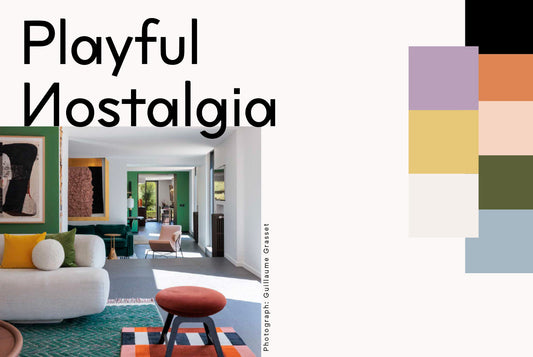The craft of picture framing, an art form that elegantly encapsulates moments, artworks, and memories, has a rich history that intertwines closely with the narratives of women artists and artisans. Traditionally viewed through the lens of a male-dominated field, the contributions of women to picture framing have often been overlooked or underappreciated. This article seeks to shed light on the pivotal role women have played in the evolution and enrichment of picture framing, from its early days to the contemporary era.
The Early Years: Renaissance to the 19th Century
The history of picture framing can be traced back to the Renaissance period, where frames were seen as integral parts of an artwork, designed to protect and enhance the piece. Initially, women's involvement in the arts was restricted by societal norms, yet they found ways to contribute to the framing world. In the shadows of their male counterparts, women in artist families often took up roles that ranged from guild members to patrons and occasionally, frame designers themselves.
As we move into the 17th and 18th centuries, the role of women in picture framing becomes slightly more visible. Women in Europe, particularly in Italy and France, began to assert their presence in the art world, not only as artists but also as framemakers. They were involved in the intricate process of gilding, carving, and decorating frames, skills that were passed down through apprenticeships in family workshops.
One of the most significant portrait commissions during the reign of King Charles II was awarded by the City of London to John Michael Wright for twenty-two full-length portraits of the Fire Judges. The frames for many of these portraits, supplied in 1671 and thereafter, were provided by three women: Mary Ashfield, Mary Fleshier, and Mary Dorrell. It would be intriguing to discover how this notable commission was secured at a time when it was uncommon for women to receive orders for frames.
 Gilding tools - Photo: Rowena Leavy
Gilding tools - Photo: Rowena Leavy
Occasionally, a woman would take over the management of an established framing business following her husband's death, continuing until her son was mature enough to assume responsibility. There are numerous references scattered throughout historical records of women either running or being employed in framing businesses.
For these women, the skill of managing a frame-making business was often acquired through hands-on experience or taught by their husbands, sometimes with additional support from their husband's foreman. However, by the late 19th century, there was a notable rise in women with formal art school training, for whom framing became not just a business but also a profession. Their focus extended to creating frames for their husbands, their peers, or for their own artworks. This aspect marks a significant chapter in the ongoing history of women in picture framing.
 Gilding tools - Photo: Rowena Leavy
Gilding tools - Photo: Rowena Leavy
The Turn of the 20th Century: A New Era for Women in Framing
The turn of the 20th century marked a significant shift for women in various fields, and picture framing was no exception. The Arts and Crafts movement, with its emphasis on handcrafted quality and artistic integrity, opened new doors for women framers. In both Europe and America, women not only mastered the craft but also started to run their own framing businesses. Their designs often incorporated motifs and styles reflective of the movement, emphasizing natural forms and simplicity.
This era also saw the emergence of notable women in the framing industry. In the UK, for example, the Suffragette frame was a significant development, with women designing frames as a form of political expression. These frames were used to house works by female artists, further intertwining the worlds of art and activism.
The Contemporary Scene: Women Leading the Way
Today, women continue to lead and innovate in the picture framing industry. With the advent of modern technology and the increasing value placed on diverse artistic expressions, women framers and entrepreneurs are at the forefront of the industry. They run successful online platforms, local workshops, and international businesses, blending traditional techniques with contemporary designs.
Moreover, women in framing today are not just focusing on the craft itself but also on the sustainability and ethics of the materials used. They are at the helm of initiatives aimed at reducing waste and promoting eco-friendly materials, reflecting a broader commitment to environmental responsibility within the industry.
A Legacy of Innovation and Resilience
The history of women in picture framing is a testament to their resilience, creativity, and enduring impact on the art world. From the Renaissance workshops to contemporary studios, women have continuously contributed to the evolution of framing practices, often in the face of societal challenges. Their legacy is not just in the frames they have crafted but, in the barriers, they have broken, paving the way for future generations of women artisans and entrepreneurs.

In interior design, we often see frames that integrate so well within the space they almost create the illusion of being part of the architectural structure. This concept is older than we might think. In the 1930s, the trailblazing artist Hannah Gluckstein (‘Gluck’) designed and patented the popular Art Deco-style Gluck frame, featuring a three-tiered design. These frames were painted or papered to match the wall on which they were hung, giving the illusion that they were an extension of a room's architecture and becoming an integral part of Modernist and Art Deco interiors.

As we continue to explore and appreciate the art of picture framing, it is crucial to recognise and celebrate the contributions of women throughout history. Their stories enrich our understanding of the craft and inspire ongoing innovation and excellence in the world of picture framing.



